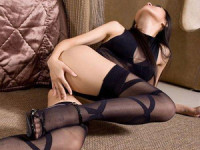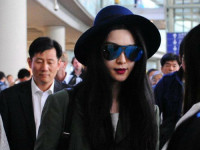Development of Classical and modern control
来源:互联网 发布:淘宝卖家怎么寄快递 编辑:程序博客网 时间:2024/06/03 22:46
Classical control in the 1930's and 1940's
Bode, Nyquist, Nichols, . . .
- Feedback amplifier design
- Single input, single output (SISO)
- Frequency domain
- Graphical techniques
- Emphasized design tradeoffs
--Effects of uncertainty
--Nonminimum phase systems
--Performance vs. robustness
Problems with classical control
Overwhelmed by complex systems:
- Highly coupled multiple input, multiple output systems
- Nonlinear systems
- Time-domain performance specifications
The origins of modern control theory
Early years
- Wiener (1930's - 1950's) Generalized harmonic analysis, cybernetics,
ltering, prediction, smoothing - Kolmogorov (1940's) Stochastic processes
- Linear and nonlinear programming (1940's - )
Optimal control
- Bellman's Dynamic Programming (1950's)
- Pontryagin's Maximum Principle (1950's)
- Linear optimal control (late 1950's and 1960's)
-- Kalman Filtering
-- Linear-Quadratic (LQ) regulator problem
-- Stochastic optimal control (LQG)
The diversification of modern control in the 1960's and 1970's
Applications of Maximum Principle and Optimization
-- Zoom maneuver for time-to-climb
-- Spacecraft guidance (e.g. Apollo)
-- Scheduling, resource management, etc.
- Linear optimal control
- Linear systems theory
-- Controllability, observability, realization theory
-- Geometric theory, disturbance decoupling
-- Pole assignment
-- Algebraic systems theory - Nonlinear extensions
--Nonlinear stability theory, small gain, Lyapunov
--Geometric theory
--Nonlinear ltering - Extension of LQ theory to in nite-dimensional systems
- Adaptive control
Modern control application: Shuttle reentry
The problem is to control the reentry of the shuttle, from orbit to
landing. The modern control approach is to break the problem into two
pieces:
- Trajectory optimization
- Flight control
- Trajectory optimization: tremendous use of modern control principles
-- State estimation (filtering) for navigation
-- Bang-bang control of thrusters
-- Digital autopilot
-- Nonlinear optimal trajectory selection - Flight control: primarily used classical methods with lots of simulation
-- Gain scheduled linear designs
-- Uncertainty studied with ad-hoc method
Modern control has had little impact on feedback design because it
neglects fundamental feedback tradeoffs and the role of plant uncertainty.
The 1970's and the return of the frequency domain
Motivated by the inadequacies of modern control, many researchers
returned to the frequency domain for methods for MIMO feedback control.
- British school
-- Inverse Nyquist Array
-- Characteristic Loci - Singular values
-- MIMO generalization of Bode gain plots
-- MIMO generalization of Bode design
-- Crude MIMO representations of uncertainty - Multivariable loopshaping and LQG/LTR
-- Attempt to reconcile modern and classical methods
-- Popular, but hopelessly flawed
-- Too crude a representation of uncertainty
While thesemethods allowed modern and classicalmethods to be blended
to handle many MIMO design problems, it became clear that fundamentally
new methods needed to be developed to handle complex, uncertain,
interconnected MIMO systems.
Postmodern Control
- Mostly for fun. Sick of /modern control," but wanted a name equally
pretentious and self-absorbed. - Other possible names are inadequate:
{ Robust ( too narrow, sounds too macho)
{ Neoclassical (boring, sounds vaguely fascist )
{ Cyberpunk ( too nihilistic ) - Analogy with postmodern movement in art, architecture, literature,
social criticism, philosophy of science, feminism, etc. ( talk about
pretentious ).
The tenets of postmodern control theory
- Theories don't design control systems, engineers do.
- The application of any methodology to real problems will require some
leap of faith on the part of the engineer (and some ad hoc fixes). - The goal of the theoretician should be to make this leap smaller and
the ad hoc fixes less dominant.
Issues in postmodern control theory
- More connection with data
- Modeling
-- Flexible signal representation and performance objectives
-- Flexible uncertainty representations
-- Nonlinear nominal models
-- Uncertainty modeling in specific domains - Analysis
- System Identification
-- Nonprobabilistic theory
-- System ID with plant uncertainty
-- Resolving ambiguity; /uncertainty about uncertainty"
--Attributing residuals to perturbations, not just noise
-- Interaction with modeling and system design - Optimal control and ltering
-- Hinf optimal control
-- More general optimal control with mixed norms
-- Robust performance for complex systems with structured uncertainty
- Development of Classical and modern control
- vb.net 2005 enhancement and Modern Software Development WebCast Series
- Modern Cross Platform Development
- pansharping文献:《A survey of classical methods and newtrends in pansharpening of multipectral images》
- Professional ASP.NET 2.0 Server Control and Component Development
- X Keyboard focus mechanism and typical operation of modern toolkits
- Challenges and solutions - Architecture of a Modern Web Application
- Inversion of Control (IoC) and Dependency Injection
- Inversion of control and Dependency injection
- Dependency injection and inversion of control
- MvvM_Xamarin Service Location and Inversion of Control
- Classical Learning curves of common editors
- Great Classical Musics For All of U.
- The Top 100 Masterpieces of Classical Music
- The brief history of iterative and incremental development
- The Research and Development of SCADA in Petroleum Industry
- Development environment and tools of device driver(一)
- Development environment and tools of device driver(二)
- ArrayList用法 (经典)
- asp.net中对文件的创建,移动,复制,及删除操作
- symfony06:运行symfony
- avgnt.exe
- avgserv.exe
- Development of Classical and modern control
- 乌矿难死亡69人 设备陈旧可能是事故原因
- 中国将向孟加拉国提供100万美元的紧急援助
- 编剧罢工殃及演员 好莱坞将陷入瘫痪?
- avguard.exe
- symfony07:配置symfony
- 正则表达式30分钟入门教程
- java读取网页代码的方法
- avgupsvc.exe


